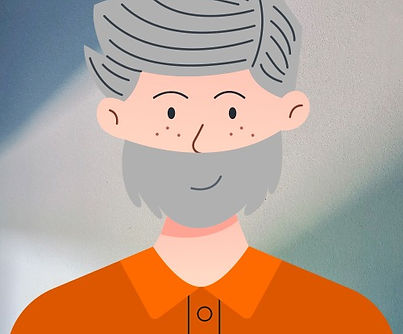
Case Study:
Climate App
Project Overview
This case study presents a project undertaken in the Google UX Design Professional Certificate program. The project's objective was to design a product that would help users combat climate change at a local, individual level. The product, a mobile app, was developed through a series of stages, including conducting interviews, creating wireframes and prototypes, conducting usability studies, and iterating on designs.
The primary challenge identified from user interviews was a sense of fear and helplessness about climate change. Users were eager to make a difference but were unsure how to track their habits or influence policy changes. The target audience for the app was smartphone users aged 18-40 who were keen to reduce their carbon footprint.
The project involved creating personas based on user interviews, developing a user journey, and creating wireframes and prototypes. Usability studies were conducted at two stages - after the creation of wireframes and the development of high-fidelity prototypes. The findings from these studies guided the design process and helped refine the prototypes.
The final product was a mobile app that allowed users to track their carbon footprint, access scientific information about climate change, and contact local representatives to encourage policy changes. The app was well-received by users, who appreciated its easy navigation and the resources it provided. The project also included the creation of a responsive website to complement the mobile app.
The project was a learning experience in understanding and translating user needs into a functional and appealing design. Future steps for the project include conducting another usability study to ensure all user pain points have been addressed and planning further iterations for better customizations.
Research and Discovery
The research phase of this project was crucial in understanding the needs and concerns of our target users. This phase involved a combination of qualitative and quantitative research methods to gather insights and inform our design decisions.
I began by interviewing five individuals concerned about climate change and its impact on their lives. These interviews provided valuable insights into their fears, motivations, and desires. I discovered that while most of my interviewees were deeply concerned about climate change, they felt helpless and unsure of how to make a difference.
Based on the insights gathered from the interviews, I created empathy maps to understand my users' needs and motivations better. This process helped me identify a primary user group: individuals who wanted an app that would help them combat climate change at a local, individual level. It also revealed that users wanted the ability to contact their local representative to demand policy change.
User Personas
I developed three personas - Alexis, Tori, and Mark - each representing a different user type with unique needs and goals. These personas helped me empathize with my users and design a product that would meet their specific needs.
User Jouneys
I created user journey maps for each persona to visualize their experience with the app, from initial engagement to achieving their goals. This helped us identify potential pain points and opportunities for enhancing the user experience.




Usability Studies
I conducted two rounds of usability studies using wireframes and high-fidelity prototypes. These studies helped me understand how users interacted with my design and revealed areas that needed refinement.
Through this comprehensive research process, I gained a deep understanding of my users and their needs, guiding my design decisions and helping me create a product that truly resonated with my target audience.



Key Takeaways
Through user-focused design can drive change and make a tangible impact. Good design is not just visually pleasing, it's empowering.
-
User-Centered Design: The project emphasized the importance of a user-centered design approach. By conducting user interviews, creating personas, and performing usability studies, I ensured that the app was designed to meet the specific needs and preferences of the target users.
-
Addressing User Pain Points: The project highlighted the significance of addressing user pain points. Users expressed feelings of helplessness and uncertainty about how to combat climate change. The app was designed to empower users by providing tools to track their carbon footprint, access reliable information, and contact local representatives.
-
Iterative Design Process: The project demonstrated the value of an iterative design process. I conducted usability studies at two stages of the design process and used the feedback to refine the app. This iterative approach ensured that the final product was user-friendly and effective.
-
Importance of Accessibility: The project underscored the importance of making the app accessible to many users. I created a responsive website in addition to the mobile app, ensuring that users could access the platform on various devices.
-
Future Improvements: The project concluded with plans for future improvements. Plan to conduct another usability study to address all user pain points and plan further iterations for better customizations. This shows a commitment to continuous improvement and user satisfaction.



